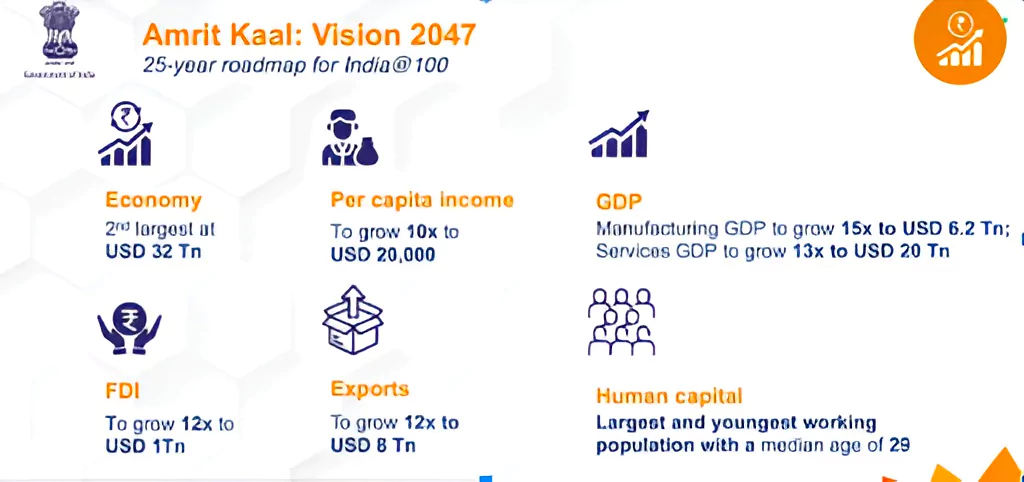
As India traverses the road to Amrit Kaal, the agriculture sector’s journey will be difficult, and filled with challenges that need to be addressed in a priority manner.
Agriculture Sector in India
- Contribution to Economy: The share of agriculture in total Gross Value Added (GVA) of the economy has declined from 35% in 1990-91 to 15% in 2022-23.
Definition of Agriculture
- The Food and Agriculture Organization (FAO) defines agriculture as “the science, art, and practice of cultivating the soil, producing crops, and raising livestock.”
- It focuses more on the specific activities involved in agriculture, such as growing crops and raising livestock.
- As per the Niti Aayog, the irrigated area out of the net cropped area of 140 million hectares has increased to 55% from 47% in the last six years.
|
-
- The agricultural sector is estimated to constitute 18% of India’s GVA in FY24.
- Employment Generation: According to the Periodic Labour Force Survey (PLFS) about 45.76% of the total workforce is engaged in agriculture and allied sectors during 2022-23.
- Foreign Earnings: During the year 2022–2023, the agricultural exports amounted to USD 43.37 billion, registering an increase of 6.04% over the exports of USD 40.90 billion during the corresponding period of the previous financial year 2021-2022.
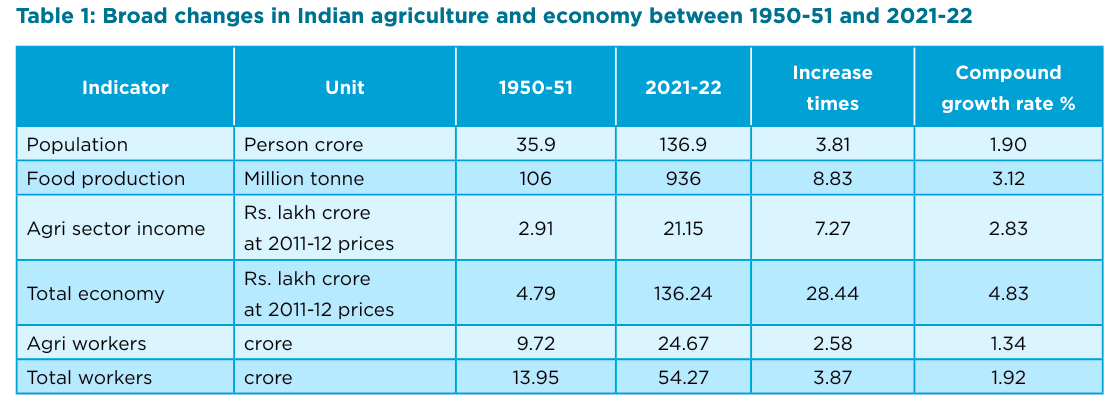 India ranks second-largest producer of fruits, vegetables, tea, farmed fish, sugarcane, wheat, rice, cotton, and sugar. The horticulture production was 355.25 million tonnes which is the highest ever for Indian Horticulture.
India ranks second-largest producer of fruits, vegetables, tea, farmed fish, sugarcane, wheat, rice, cotton, and sugar. The horticulture production was 355.25 million tonnes which is the highest ever for Indian Horticulture.
- Significance: The total food grains production for FY23 was 329.7 million tonnes, marking a rise of 14.1 million tonnes compared to the previous year.
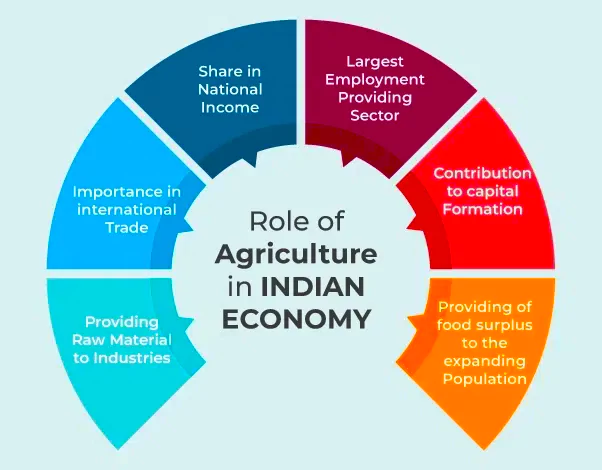 Rice, wheat, pulses, Nutri/coarse cereals, and oilseeds witnessed record increases in production.
Rice, wheat, pulses, Nutri/coarse cereals, and oilseeds witnessed record increases in production. - India’s global dominance extends across agricultural commodities, making it the largest producer of milk, pulses, and spices worldwide.
- The agricultural sector is the bedrock of the nation’s economy.
- Despite challenges posed by the global health crisis and variability in climate conditions, the sector has demonstrated remarkable tenacity and resilience, contributing significantly to India’s economic recovery and development.
Enroll now for UPSC Online Course
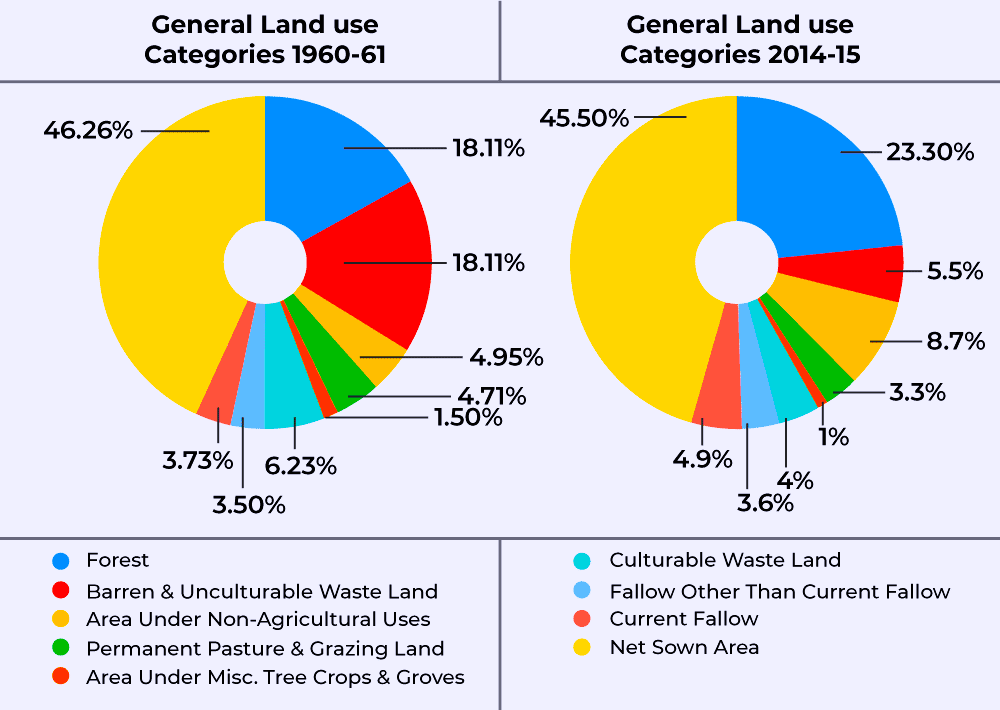
Concerning Statistics on the Agricultural Sector in India
- Declining Trend: The sectoral deflator in agriculture and allied sectors declined from 9.4 in 2013-14 to 5.0 in 2019-20 and 3.7 in 2023-24.
- Incomes and Profitability: There was a strong downward pull on agricultural prices leading to a squeeze on farmers’ incomes.
- Real incomes of agricultural households from cultivation fell by about 1.4% between 2012-13 and 2018-19.
- The fall in incomes from cultivation was due to the stagnation or fall of agricultural prices and a sharp rise in the costs of inputs in agriculture, particularly fertilizers.
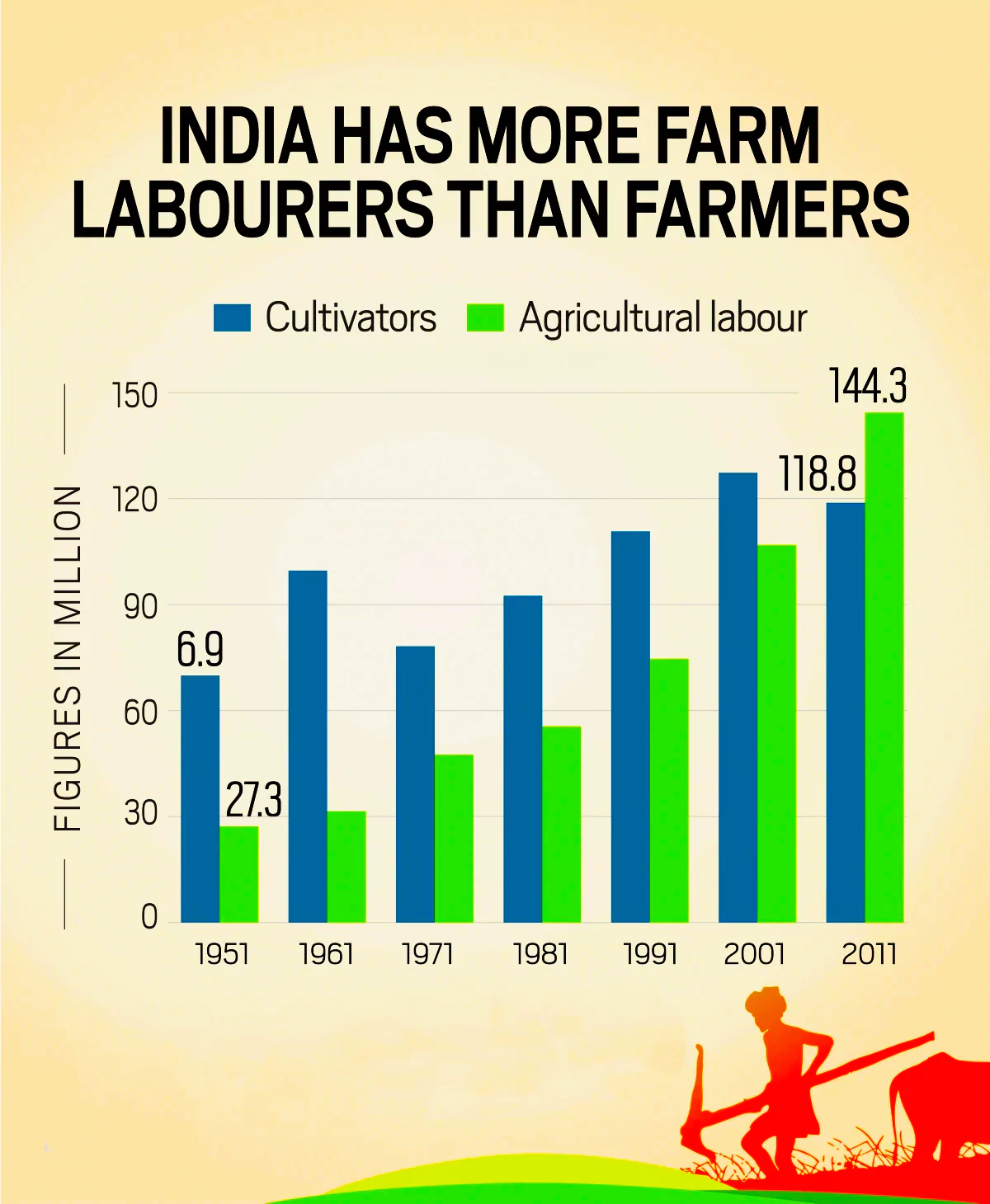 The real wages in rural India have never risen after 2016-17 and have even fallen after 2020-21.
The real wages in rural India have never risen after 2016-17 and have even fallen after 2020-21.
- All rises in nominal wages were wiped out by inflation.
- Rise of Unemployment: Rural unemployment rose between 2011-12 and 2018-19. For rural men, the rise was from 1.7% to 5.6%, and for rural women, it was from 1.7% to 3.5%.
- Rural unemployment rates fell after 2018-19, but they remained higher than in 2011-12 in 2022-23, at 2.8% for men and 1.8% for women.
- Unemployed workers from the non-agricultural sectors crowded into the agricultural sector at a time when agricultural prices were not rising and agricultural incomes were falling.
Check Out UPSC NCERT Textbooks From PW Store
A few Important Initiatives by the Indian Government Related to Agriculture
- E-NAM National Agriculture Market (eNAM): It is a pan-India electronic trading portal which networks the existing APMC mandis to create a unified national market for agricultural commodities.
- National Mission For Sustainable Agriculture (NMSA): It has been formulated to enhance agricultural productivity, especially in rainfed areas, by focusing on integrated farming, water use efficiency, soil health management, and synergizing resource conservation.
- Prime Minister Krishi Sinchayee Yojana (PMKSY): It has been formulated with the vision of extending the coverage of irrigation ‘Har Khet ko pani’ and improving water use efficiency ‘More crop per drop’ in a focused manner with end to end solution on source creation, distribution, management, field application and extension activities.
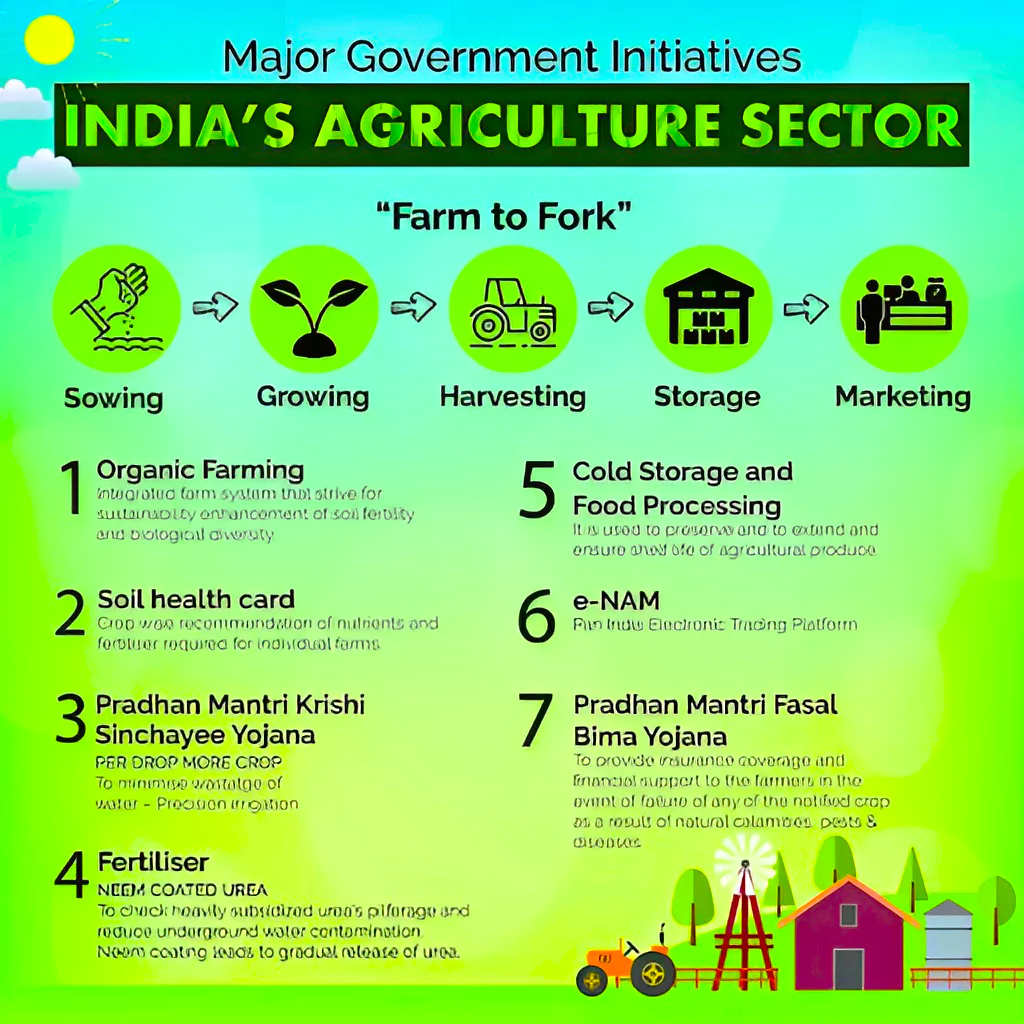 The Paramparagat Krishi Vikas Yojana (PKVY): It was launched in 2015. It is an extended component of Soil Health Management (SHM) under the Centrally Sponsored Scheme (CSS), National Mission on Sustainable Agriculture (NMSA). The Paramparagat Krishi Vikas Yojana (PKVY): It was launched in 2015. It is an extended component of Soil Health Management (SHM) under the Centrally Sponsored Scheme (CSS), National Mission on Sustainable Agriculture (NMSA). -
- PKVY aims to support and promote organic farming, which will improve soil health.
- Pradhan Mantri Fasal Bima Yojana (PMFBY): It is a government-sponsored crop insurance scheme that integrates multiple stakeholders on a single platform.
- Micro Irrigation Fund (MIF): The government approved a dedicated Rs5,000 crore fund (set up under NABARD) to bring more land under micro-irrigation as part of its objective to boost agriculture production and farmers’ incomes.
- Digital Agriculture: It aims to improve the existing National e-Governance Plan in Agriculture (NeGPA) by developing a digital public infrastructure for agriculture to enable inclusive, farmer-centric solutions through relevant information services.
- New Agriculture Export Policy: It aims to double agricultural exports from present ~US$ 30+ Billion to ~US$ 60+ Billion by 2022 and reach US$ 100 Billion in the next few years thereafter, with a stable trade policy regime.
- To diversify the export basket and destinations and boost high-value and value-added agricultural exports, with a focus on perishables.
|
Challenges Faced by Indian Agriculture Sector
- Large Number of Small Land-holdings: These small landholdings (85% of total arable land) fundamentally limit the scope for primary producers.
- A major challenge facing smallholder farmers is low productivity.
- They struggle due to the lack of knowledge about increasing productivity using innovative technologies.
- Many marginal farmers are poor and unable to afford the goods and services needed to improve the operational efficiency of their small-scale farming activity.
- Impact on Environment: Agriculture and the environment are closely linked and significantly impact each other. Degradation of soil and water quality, acceleration of soil erosion, contamination of groundwater, and poor water management are some ill effects of the excess use of agrochemicals.
- Depleting Aquifers: Aquifers are depleting due to the insatiable demand for agriculture reaching a threshold point where it won’t be economically viable to extract water for irrigation.
- Climate Change: Climate is changing irreversibly for the worse. Climate change has amplified the intensity of weather events, led to floods, droughts, and weed and pest infestations, and threatened the existence of farming as a livelihood.
- Agriculture’s vulnerability to climate change can aggravate food insecurity caused by overpopulation.
- World Trade Organisation (WTO) Constraints: The World Trade Organisation will not change. For many years, the US has deliberately crippled the dispute-settlement mechanism that creates obstacles for India on enforcement of rulings domestically.
- Various leaders and experts said that the policy of the WTO is very bad for farmers. The WTO does not give rights to the farmers, the way they do it.
Check Out UPSC Modules From PW Store
WTO on Subsidy
- In the WTO agreement, subsidies in general are identified by “boxes” which are given the colors of traffic lights: green (permitted), amber (slow down — i.e. need to be reduced), and red (forbidden).
- Article 6 of the Agriculture Agreement of the WTO: It defines all domestic supports except those in the blue and green boxes. These supports are subject to limits as they cause trade distortion and have environmental impacts.
|
-
- Example: America is giving a subsidy of USD 8500 annually to its farmers in the green box, India’s subsidy is about Rs 258 now and there can be no competition between the two.
- Global priority to Ensure Low Food Prices for Consumers: It is easiest achieved by artificially driving down farm-gate prices but makes farming environmentally unsustainable and economically unremunerative.
- Poor Infrastructure & Lack of Advanced Technologies: Poor storage facilities and a lack of pest control can lead to mold and pest infestations and ruin produce.
- Also, lack of access to technology and allied services results in crops rotting in fields.
- Food losses and waste translate to economic losses for all stakeholders in the agricultural value chain and increase food prices, which affects food security and accessibility to food for vulnerable groups.
- Inefficient Governance & Unaccountability: The inept governance and lack of accountability in the ministries managing the agricultural sector at the Centre and the states is due to the authoritative attitude of top officials.
- No Appropriate Focus: Agriculture is a state subject, where the states do not work in tandem with national objectives, but use meager resources for populist dole-outs rather than investing in the future.
- Subsidies Culture: Input subsidies like the skewed fertilizer subsidy leads to indiscriminate use of fertilizers, impacting the health of the people and the planet.
- No Significant Investment: Public investment in agriculture, in general as well as in specific fields like agricultural research and extension, were stubbornly stagnant, and occasionally even fell, over the past decade.
- Capital investment in agricultural and allied sectors did not rise.
- Most of the long-term bank credit supplied to agriculture was also diverted away as short-term loans to corporates and agri-business firms.
- Lack of Data Sources on/off the Field: A lack of reliable data in the agricultural industry means that it is not possible to precisely point out where interventions are needed (in agricultural policies or processes).
Enroll now for UPSC Online Classes
Way Forward
- Need for Fundamental Changes: Positive fundamental changes, including the process of framing policies, are the need of the hour.
- Education & Awareness: It is important to educate smallholder farmers and provide the required financing to adopt smart farming practices.
- Infrastructure: To minimize post-harvest losses and enhance market access for perishable commodities, efficient agri-logistics and cold chain infrastructure must be developed.
- Example: The “Kisan Rail initiative” in India can be complemented by initiatives in other modes of transport.
- Access to Technology: It can make smallholding farming efficient, climate-smart, and profitable. Implementing drone-based precision agriculture can be more efficient and effective.
- As smallholder farmers play a significant role in food security, they must gain access to technological innovations, processes, and machinery and gain access to knowledge on their use.
- As per the Food and Agriculture Organization (FAO), India’s small-holder farmers are those who own less than 2.0 ha of farmland.
- Genetic Editing Techniques are essential for developing climate-resilient, disease-resistant, and high-yielding crop varieties more precisely and efficiently than traditional breeding methods, such as the CRISPR–Cas9 system.
- Need for Optimal use of Agrochemicals: Agrochemicals improve crop health, but their overuse harms the environment by altering the soil’s pH value.
- If agrochemicals enter food chains, they can cause various health problems in humans and animals.
- Use of Agroecological Intensification: This can involve practices like permaculture, agroforestry, and regenerative agriculture.
- Example: The Zero Budget Natural Farming (ZBNF), means raising crops without using any fertilizers and pesticides or any other external materials.
- Enhance Agricultural Productivity, Competitiveness, and Rural Growth: To achieve the desired result, there is a need to:
- Promote new technologies and reforming agricultural research and extension
- Improve water resources and irrigation/drainage management
- Facilitate agricultural diversification to higher-value commodities
- Promoting high growth commodities
- Developing markets, agricultural credit and public expenditures
- Investments in Research & Extension Services: Such investments have stayed below the level of inflation.
- Funding has actually dropped, even when every rupee invested in agricultural research yields economic returns upwards of 10 times over other investments.
- Sovereign Bankruptcy Procedure: Public debt, both at central and state government levels, leaves less financial flexibility to plan for the long term and does not allow for endless further subsidies.
- Many states are in line to be technically categorised as bankrupt and a sovereign bankruptcy procedure for states is required.
- Work on Model Agriculture Policy: It can guide states to promote sustainable practices, efficient resource use, and empower farmers through better infrastructure and market access.
- As per the recommendations of Ashok Dalwai Committee, agriculture marketing needs to be placed in the Concurrent List.
- Establish Agricultural Innovation Clusters: There is a need to develop agricultural innovation clusters or agri-parks that bring together research institutions, agri-tech startups, farmer cooperatives, and related industries in a collaborative ecosystem.
- The “Agri-Food Innovation Park” in Singapore.
- Public-Private Partnerships: It should be encouraged for agricultural extension services, leveraging the expertise of private companies, agri-tech startups, and non-governmental organizations to provide farmers with timely and localized advice, training and support.
Check Out UPSC CSE Books From PW Store
![]() 5 Jun 2024
5 Jun 2024
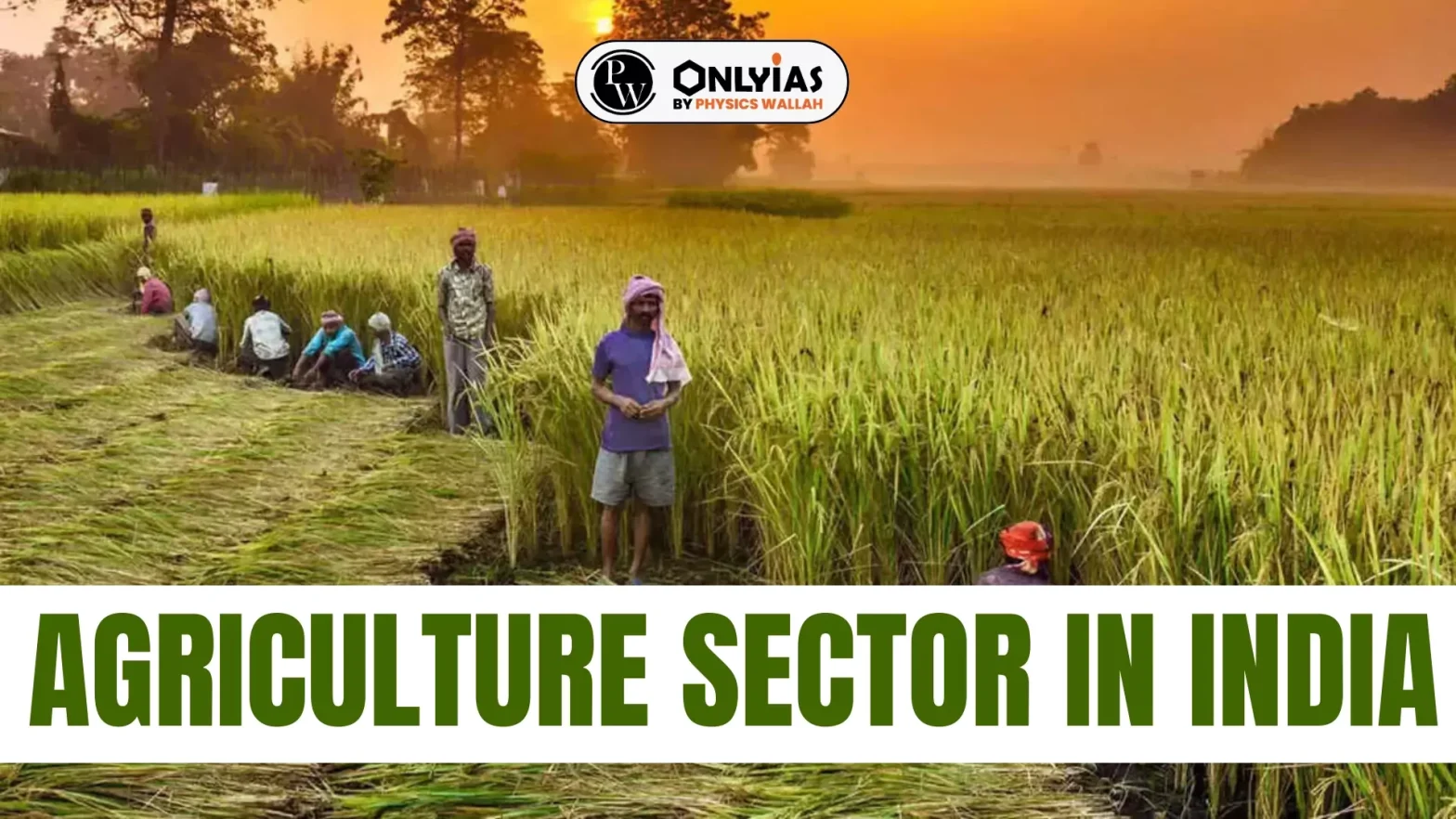

 India ranks second-largest producer of fruits, vegetables, tea, farmed fish, sugarcane, wheat, rice, cotton, and sugar. The horticulture production was 355.25 million tonnes which is the highest ever for Indian Horticulture.
India ranks second-largest producer of fruits, vegetables, tea, farmed fish, sugarcane, wheat, rice, cotton, and sugar. The horticulture production was 355.25 million tonnes which is the highest ever for Indian Horticulture. Rice, wheat, pulses, Nutri/coarse cereals, and oilseeds witnessed record increases in production.
Rice, wheat, pulses, Nutri/coarse cereals, and oilseeds witnessed record increases in production. 
 The real wages in rural India have never risen after 2016-17 and have even fallen after 2020-21.
The real wages in rural India have never risen after 2016-17 and have even fallen after 2020-21.
